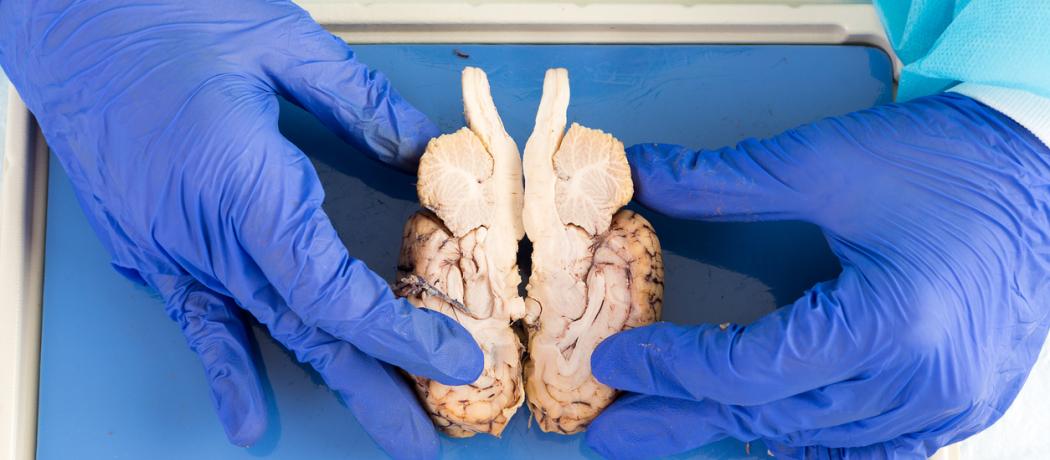A recent CTV news story revealed that the UBC Faculty of Medicine is running low on a precious resource—cadavers.
Over 20 years ago, my wife and I signed up to donate our bodies to UBC Medical School. In November of last year my beloved wife died in her sleep, and staff at her care home graciously let me spend some time with her inert body. With tears and sighs, I kissed her cooling forehead and then went to the nursing station to sign various forms and to remind them that she was signed up for body donation.
The relevant registration document was found on her chart, a phone call was made, and very efficiently, within a couple of hours, the assigned funeral agency came for her body. The next morning I received a kind phone call from the Anatomy Department that her body was accepted, with deep thanks. The following day I received a very warm thank you note from UBC. The day after that, I received a call from the funeral agency confirming that in 3 years at the latest the cremated remains would be returned to my family. The agency then offered choices of future containers—from cardboard to elaborate cases—whichever, but to be paid for now, in advance. This was a bit jarring, but the funeral agency’s approach was with deep sympathy. Another chapter was closed in my 67-years-long marriage to the person I loved.
There is a very long European history of cadaveric dissection as a teaching tool in anatomy.[1] Before the 3rd century BC, exploration of the human body was limited by religious and esthetic taboos to opening the body for anatomical purposes. Then the ambition of Greek rulers to establish Alexandria as a glittering scientific centre overcame cultural habits and bodies of executed criminals were handed over to noted physicians of the time.
A few hundred years later, with the spread of Christianity, the dissection of human bodies was prohibited as it was considered blasphemous. Physicians of the time depended on the works of Aristotle and Galen without questioning their scientific validity. It was some 1000 years later, in Medieval Europe, with the opening of universities in Paris, Bologna, Oxford, and Padua that the church relented. In the Roman Empire, a decree in 1231 mandated that a human body should be dissected at least once every 5 years and attendance was made compulsory for the practice of medicine or surgery.
By the 1300s, Bologna emerged as a popular institution for the study of medicine. Human dissection, usually on an executed criminal, and often on a female body, was performed in a public display. The public dissections were standardized, requiring a lecturer, who read Galen’s texts. The lecturers pointed to the parts of the body dissected by barber surgeons.
By the 15th century, the popularity of anatomy involved contemporary artists who started to perform their own dissections. Leonardo da Vinci and Andreas Vesalius set new standards in their portrayal of the human body. Large audiences were seated in temporary structures and even in churches and later in specifically constructed anatomical theaters. The popularity of these public dissections led to a demand for bodies. The result was grave robbing, assaulting funeral processions to remove corpses, and some artists’ and anatomists’ unsavory association with those in charge of the time and mode of execution of criminals. Andreas Vesalius admitted to procuring cadavers in unethical ways, but when he took the knife away from the barber surgeon, he became instrumental to establishing dissection as central to medical training and research of those days.
In the 16th and 17th centuries, English physicians came up with original contributions. William Harvey is famous for documenting his theory of the circulation of blood.
By the 18th and early 19th century, doctors and surgeons greatly emphasized anatomy and human dissection as essential to medical training. Grave robbing, body snatching, and even murder became alarmingly frequent. Eventually the British Anatomy Act of 1832 put an end to grave robbing, but unintentionally made poverty a criterion for dissection in England. Desperately poor grieving family members sold the body of relatives, and unclaimed bodies in work houses or charitable hospitals were given away for anatomical dissection.
Close to a 100 years later, in the 1933–1944 era of the German National Socialist regime, the corpses of executed political prisoners and the dead bodies of victims of atrocities in concentration camps, and even bodies of inmates from psychiatric institutions, were used for anatomical research and teaching. The subjects of SS officer and anatomist Eduard Pernkopf’s technically highly regarded but now morally unacceptable anatomy textbooks, Topographische Anatomie des Menschen, were guillotined or otherwise executed political prisoners and victims of the Holocaust.[2]
Today, body donations constitute the sole source of human bodies for dissection in medical schools in most parts of the world. The number of hours assigned for human dissection has been reduced in most medical schools, but research findings indicate not only the importance of dissection in the anatomical sciences but the invaluable contribution of appropriately managed anatomy teaching programs toward the making of empathetic physicians of the future.[3]
—George Szasz, CM, MD
References
1. Ghosh SK. Human cadaveric dissection: A historical account from ancient Greece to the modern era. Anat Cell Biol 2015;48:153-169.
2. Atlas MS. Ethics and access to teaching materials in the medical library: The case of the Pernkopf atlas. Bull Med Libr Assoc 2001;89:51-58.
3. Guo K, Luo T, Zhou L-H, et al. Cultivation of humanistic values in medical education through anatomy pedagogy and gratitude ceremony for body donors. BMC Med Educ 2020.
This post has not been peer reviewed by the BCMJ Editorial Board.
 |
| This work is licensed under a Creative Commons Attribution-NonCommercial-NoDerivatives 4.0 International License. |

